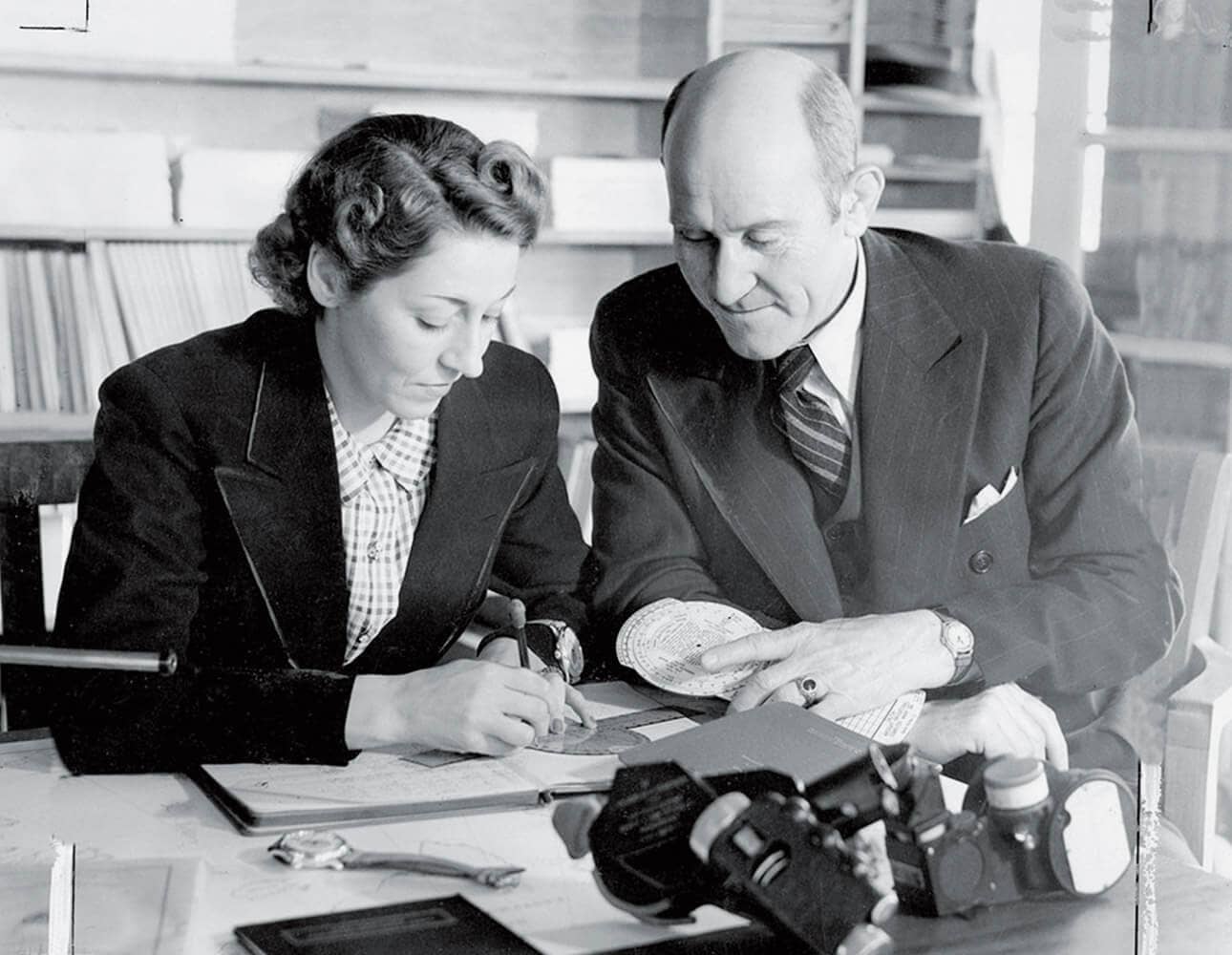
Amy Johnson (left) is trained by navigation expert Philip Van Horn Weems. Over her sleeve, the British aviatrix is wearing a LONGINES pilot’s watch with an inner rotating disc that synchronises the watch to the radio signal. On the desk there is another LONGINES pilot’s watch. (Annapolis, Maryland, USA, 3rd May 1937).
1889-1979
Before the era of radio guided flights, his creative mind helped thousands of pilots find their way: Philip Van Horn Weems, Navy officer, instructor and inventor. During his education at the U.S. Naval Academy in Annapolis, Weems excelled as a first-class athlete and as a seaman. He was an outstanding student, with expertise in navigation, and went on to teach at the Academy. In the 1920s many pilots were being killed when they attempted to cross the oceans, as aerial navigation was difficult and often inaccurate. Weems expanded his naval experience to the needs of pilots. In 1927, the Navy officer established the Weems School of Navigation, where many of the most influential aviators learnt their essential skills. Often angering his traditional-thinking superiors, Weems pursued new methods of celestial navigation and improved the processes and equipment for fixing position.
One of his most prominent students was Charles Lindbergh who the Navy assigned Weems to teach celestial navigation for a month in 1928. The techniques Weems developed became the standard for long-range navigation for three decades, and were adopted by the U.S. Army Air Corps and Pan American Airways. Before 1927, watches could only be set to the minute. However, just a 4 second error in a watch could put a plane a mile off course, depending on its speed. In 1927, Weems devised a watch that synchronised perfectly with the time signal emitted by the radio to the nearest second, without stopping the movement. This was achieved by a rotating inner disc equipped with a 60-second scale.
One of his most prominent students was Charles Lindbergh who the Navy assigned Weems to teach celestial navigation for a month in 1928. The techniques Weems developed became the standard for long-range navigation for three decades, and were adopted by the U.S. Army Air Corps and Pan American Airways. Before 1927, watches could only be set to the minute. However, just a 4 second error in a watch could put a plane a mile off course, depending on its speed. In 1927, Weems devised a watch that synchronised perfectly with the time signal emitted by the radio to the nearest second, without stopping the movement. This was achieved by a rotating inner disc equipped with a 60-second scale.
LONGINES, a renowned specialist for pilot's watches and official supplier of “Fédération Aéronautique Internationale”, started producing the “seconds-setting” watch in 1929. That same year Weems applied for a patent for a watch that could be synchronised to a radio signal, either by a rotating central dial or a bezel. Produced by LONGINES, the watches designed by Lindbergh and Weems were the first in the world to be equipped with a rotating bezel. In August 1931 the LONGINES Weems Second-Setting Pilot Watch was approved by the U.S. Army Air Corps, becoming a part of pilots’ equipment and remaining in service until 1946.
Philip Van Horn Weems not only improved the processes and equipment for fixing position in aerial navigation. His techniques became the standard for long-range navigation for three decades. In 1960, Weems received a gold medal from the American Institute of Navigation. The institute also created an annual award named after him.
Philip Van Horn Weems not only improved the processes and equipment for fixing position in aerial navigation. His techniques became the standard for long-range navigation for three decades. In 1960, Weems received a gold medal from the American Institute of Navigation. The institute also created an annual award named after him.

